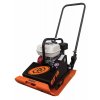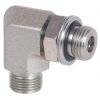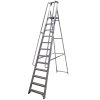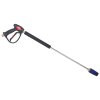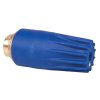How to mow your lawn
January/February
- If the weather is mild, occasionally cut your lawn, maintaining about 26mm of growth.
- Keep off the grass if frozen or water logged.
March
- Rake or scarify your lawn thoroughly, removing moss
- Aerate and spike your lawn all over
- Apply lawn sand
- Keep your mower blades high, cut just the top of the grass
April
- Reseed bare patches, apply fertilisers and moss killer towards the end of the month
- Mow regularly, lowering the blades gradually
May
- You can treat your lawn with selective weedkillers or combined weedkillers
- Use lawn feed preparations if you haven't fed the lawn in April
- Mow regularly
June
- Mow your lawns twice a week if possible, working to a definite pattern,
- Water the grass if necessary, remembering to soak thoroughly
July
- Treat your lawns with second application of fertaliser
- Water as necessary
- Don't lower the blades too low to your lawn
August
- Keep mowing regularly and watering as necessary
- Fill in any cracks caused by drought with a mixture of sharp sand and soil
September
- Raise mower blades to allow the grass to thicken and protect roots from winter frost and snow
- Apply autumn winter fertiliser, weed killer and moss killer
October
- The best time to rake and scarify out thatch from turf
- Spike your lawn to assist drainage
- Brush in soil and sharp sand
- Continue cutting as necessary
November/December
- We recommend this time of year to have your mower serviced
- We also offer a storage facility so you can have your mower serviced and stored, freeing up space over the winter months - we store inside
- Don't cut your lawn very wet as this will compact your soil which encourages water logging









